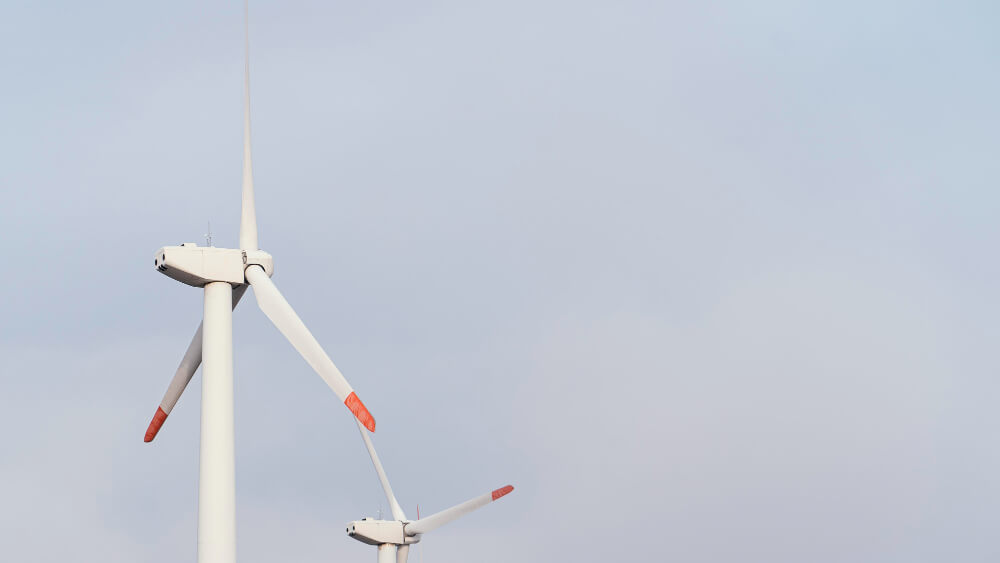Lightning is a natural phenomenon that causes significant damage to both humans and property. India is experiencing strong thunderstorms with lightning strikes. Building structures, important infrastructure, and other items require protection owing to frequent lightning strikes; where does the importance of the lightning protection system in India arise from? For these systems to work optimally, they must be properly maintained and tested. In this article, we will cover how to maintain and test your lightning protection system, with a focus on wind turbines in India, and how to choose Aashapuri Engineering Pvt. Ltd. for the finest lightning protection.
To begin, there is a great deal of uncertainty concerning how electrical and lightning currents may infiltrate structures or be propelled through them by storms.
A lightning protection system securely directs the enormous energy of a lightning strike to the ground, avoiding damage to structures and electrical equipment. The system is made up of the following components:
1. Rods or Air Terminals—These are attractors for lightning strikes on a structure.
2. Down conductors are cables that transport lightning energy from the air terminals to the ground.
3. Grounding System—A network of buried electrodes used to safely disperse energy from lightning strikes.
4. SPDs prevent electrical systems from experiencing rapid voltage spikes caused by lightning.
In India, with its spreading infrastructure from simple residential buildings to industrial plants and wind turbines, proper care is a must for the lightning protection system.
Why You Should Keep Your Lightning Protection System
Lightning protection systems can deteriorate over time due to component wear. The weather has the potential to produce corrosion, physical damage, or degeneration. Neglecting basic maintenance might result in a failure when it is most required. If you are reading this in India, thunderstorms are especially powerful during or during the monsoon season, and a breakdown of the system might result in disaster.
Here’s why frequent lightning protection system maintenance is critical:
- Safety in opposition to structural damage: it brings devastating fires, explosions, and structural damage. A powerful lightning protection system prevents the hazard of such damage by way of safely channeling power from the strike into the ground.
- Prevention of Electrical Surges: Lightning-precipitated surges can purposely harm electric equipment, computer systems, and sensitive electronics. Effective, well-maintained surge safety systems can forestall this.
- protection requirements Compliance: Recurring maintenance will ensure that the system complies with protection standards and guidelines as required by Indian states; for that reason, a prevention mode is needed to avoid proceedings and disputes on insurance claims.
- Saves cost: Right upkeep will lengthen the time span of the device, accordingly reducing the value of fixes and replacements.
How to take care of Your Lightning safety device in India
For the preservation of the finest lightning safety gadget in India, here are the steps to comply with in acting ordinary maintenance:
1. Visual Inspection
It ought to be checked visually at least twice a year and after any severe climate event, like a storm or maybe after a lightning strike. Take a look at those for presence:
- Air Terminals: Rods are intact, freed from rust or corrosion, and very well connected to the shape.
- Down Conductors: Unscrew any disorderly or broken conductors. Those need to be well related to the air terminals and the grounding device.
- Grounding gadget: observe the grounding electrodes for rust or harm.
- Surge safety devices: Be on the lookout for symptoms of damage, discoloration, or any shape among the best bodily harm that would have an effect on those devices’ correct operation.
2. Ease the additives
Dust, particles, and corrosion can affect a gadget’s overall performance. clean air terminals, conductors, and grounding systems, and the use of a non-corrosive cleaner. Make sure that everyone’s connections are tight and obstructions loose.
3. Trying out Grounding Resistance
The effectiveness among the best grounding systems decreases with time among the best soil or wear situations. A grounding resistance check has to consequently be performed yearly to ensure that its resistance falls in the perfect price variety, probably the greatest 10 ohms or much less. A ground resistance tester will assist you in doing that. If the end result suggests higher resistance, perhaps you must add extra electrodes or your grounding system.
4. SPD monitoring
Surge protection devices, or SPDs, protect the electrical equipment in gadgets from top-of-the-line lightning-surge damage. Over time, this additionally loses efficiency, one of the best non-forestall electric surges that take place for every other purpose. To gain such performance, keep on checking out SPDs periodically for symptoms of one of the best actual put-ons or deterioration. in which bodily deterioration has been evidenced to motivate troubles, replace it with some other precise one straight away.
5. physical harm tests
Lightning safety gadget damage also can arise bodily in different situations, which include storms, falling debris, or injuries. perceive the worn components among the best, the machine that might have been damaged to the volume, the most effective disrupting their operations. The repair of this top-of-the-line system should only be accomplished by means of the professionals
6. checking out and calibration through experts
Although ordinary visible inspections and cleansing are fundamental, expert checking out also becomes a critical component in ascertaining that the machine works the manner it is designed.
Those testing services by way of specialists encompass the subsequent:
- Continuity Trying out tests, all components that join or will join are at ease.
- Impulse testing checks the gadget for the way a lightning strike may want to occur.
- Insulation resistance checking out tests the integrity of top-of-the-line conductors and insulation to ensure no leakage of top-of-the-line contemporary.
Led by way of a group of one of the best experts in lightning safety structures in India, Aashapuri Engineering Pvt Ltd affords checking out and calibration. This crew has years of experience and is one of the best at helping ensure that your system is in the first-rate condition feasible, finishing work for each residential and business customer, together with lightning safety, probably the greatest windmills across India.
Lightning protection: the most effective wind generators in India
The wind power quarter has been developing pretty hastily in India, and wind farms are now not a unprecedented characteristic on the Indian panorama. top-of-the-line their vertical height and publicity, windmills are a great lightning threat. Therefore, Indian wind turbine lightning safety is a crucial substitute to safeguard the surprisingly high-priced gadget and retain the operation of probably the greatest wind farms.
Important components, probably the greatest wind turbine lightning safety
1. Air Terminals: Lightning rods to a wind turbine should be wind-turbine-peak suitable in addition to structure-friendly in nature.
2. Earthing system: Earthing structures at the wind turbine setup form an essential element; in flip, they are to be designed in keeping with the big power build-up lightning will have when passing through it. should have a periodic test run as well to test its resistance to falling into protection margins.
3. Surge safety: Surge protectors protect any touchy electronics and manipulate systems from windmills. Periodical testing is needed for the gadgets in case they go bad.
Aashapuri Engineering Pvt Ltd gives the overall suite among the best lightning protection solutions for wind turbines across India. This facilitates guarding renewable electricity property from the devastating electricity among the best lightning moves. Their services include the installation of some of the finest air terminals, conductors, and grounding systems particularly designed to be ideal for the demanding situations in wind turbine conditions.
Final Thoughts
It is not always just one of the best compliance to have maintenance and testing the most effective for your lightning protection system in India; however, protection and toughness over your asset’s lifetime, whether or not it is a residential building, a business complex, or maybe a wind turbine.
Aashapuri Engineering Pvt Ltd is at the forefront in its provision of the best technologically superior lightning safety solutions within India. With their expertise and excessive technological inputs, you can be assured that the lightning protection provided for you may not only be powerful but also reliable for some future years.
Despite the fact that lightning is available in each and every smallest value, it is also an unpredictable nature’s power that may be controllable if normal protection and checking out strategies are located. Consulting experts like Aashapuri Engineering ensures safety in opposition to risks.

